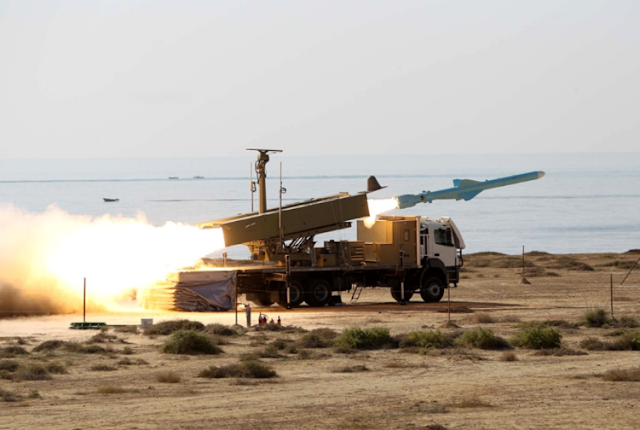The US and Iran have been posturing against each other for decades. If the US decided to invade Iran what would it look like? It would likely not go well. Iran is a massive country with many mountain ranges that would be difficult to traverse even for the US Army. While the US would have air superiority against the Iranian Air Force, it would be harried by Iranian air defenses which are quite numerous. These are just some of the hurdles the US would have to deal with in an invasion of Iran.
The US would probably invade Iran through Iraq, as an amphibious landing would be difficult due to Iran's numerous anti-ship missiles. This would be taking place along the same frontlines as the Iran-Iraq war in the 1980s. This war ended in a stalemate due to stiff resistance and rough terrain further in Iran. The US would make gains initially, but would be hampered by stiff resistance in the form of conventional warfare and guerilla tactics employing ATGMs. The US would then hit the Zagros Mountains as it advanced East. These mountains would be difficult to penetrate. It would be Afghanistan 2.0.
Iraqi Type-69 tanks destroyed by the Iranian Army during the Iran-Iraq war. Iran put up stiff resistance, it is quite possible they would do the same against the US Army.
The Qader anti-ship missile is one anti-ship missile system that would exclude an amphibious landing in Iran by the US military.
The Mountains of Iran would make advancing in the nation difficult for the US Army, and a guerilla fighter's paradise.
The Iranian Army has at least 350,00 active personnel, and the IRGC has 190,000. Iran has the ability to mobilize over a million soldiers with the Basij forces. Taking Iran's troop number, geographic size and terrain into account, the US would have to have an invasion force larger than Desert Storm or Iraqi Freedom. The US would likely need upwards of one million troops for an invasion into Iran.
Iranian troops.
Iran has several hundred tanks including about 400 T-72S and an unknown number of Karrar upgrades. Iran also operates Western tanks like the Chieftain and M60 Patton. Iran's tank fleet is not huge but it is fairly capable if morale and resolve is high in the Iranian Army ranks.
T-72S.
Iran would first come under a bombing campaign from the US. This would be a difficult operation as Iran has numerous advanced air defense systems. Some of its most capable SAMs are the Russian S-300, Tor-M1 and domestically produced 3rd Khordad and Bavar 373 SAM systems. Iran also mass produces Misagh-2 MANPADS. MANPADS accounted for most aircraft losses during the Gulf War, and a war with Iran would be more drawn out. It is quite possible the US would suffer huge aircraft losses even using stealth aircraft. The most formidable stealth aircraft that would strike Iran is the B2 Spirit bomber. Iran has early warning radar possibly capable of detecting, but not pinpointing, a B2. Iran would know it was coming and could prepare, but it would almost certainly not be able to shoot down the B2.
Early warning radar in Iran.
The B2 Spirit stealth bomber. The B2 would do serious damage, but it alone cannot win a war.
The US would probably use the M1A2 Abrams SEP V2 with the trophy active protection system. Other vehicles would still be vulnerable to attack by RPGs and ATGMs. The M2 Bradley and MRAPs would be sitting ducks against Iran's massive domestically produced ATGM arsenal. The Houthis in Yemen proved how capable Iranian ATGMs are in mountainous terrain.
M2 Bradley.
The Dehlavieh, the Iranian copy of the Russian Kornet ATGM.
The US M1A2 Abrams equipped with the Trophy active protection system, protecting it from ATGMs.
Iranian air defenses would put up a heavy fight against the US Air Force.
The 3rd Khordad is a medium range SAM that has a flight ceiling of 80,000 feet.
The S-300 is a long range SAM that would pose a serious threat to US aircraft.
The US would try to push to Tehran through the mountainous terrain. If the Iranian Army put up a fight this would be almost impossible. Even if the US managed to gain the upper hand in Iran, Iran would respond by launching ballistic and cruise missiles on Israel. Saddam did this during the Gulf War as retaliation. Iran has much more advanced and more numerous missiles than Iraq had. For this reason alone the US would think twice about a conventional war with Iran.
Even if the US was "victorious" and overthrew the Iranian Government, the population would be against the US and its 80,000,000+ inhabitants would put up a guerilla war unlike anything seen since Vietnam. Iran's mountainous terrain would mean the US would be unable to dislodge guerilla fighters, much like in Afghanistan. Iran, however, is more than twice the size of Afghanistan.
Taliban fighters in Afghanistan's mountains.
In conclusion, there is no scenario where the US would be truly victorious in a conventional war with Iran. An invasion would probably be unsuccessful and an occupation would fail. The US public also still has a bad taste in their mouth from Iraq. For these reasons the US would never invade Iran.



















No comments:
Post a Comment